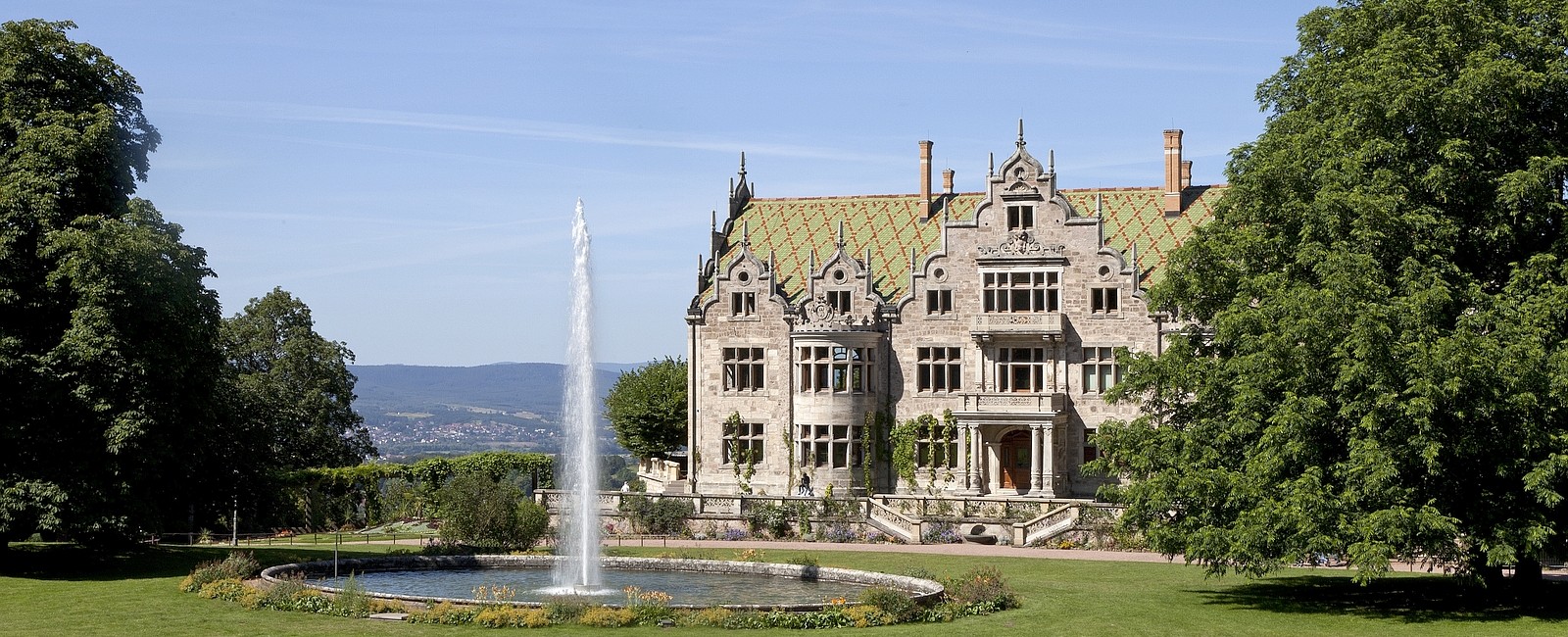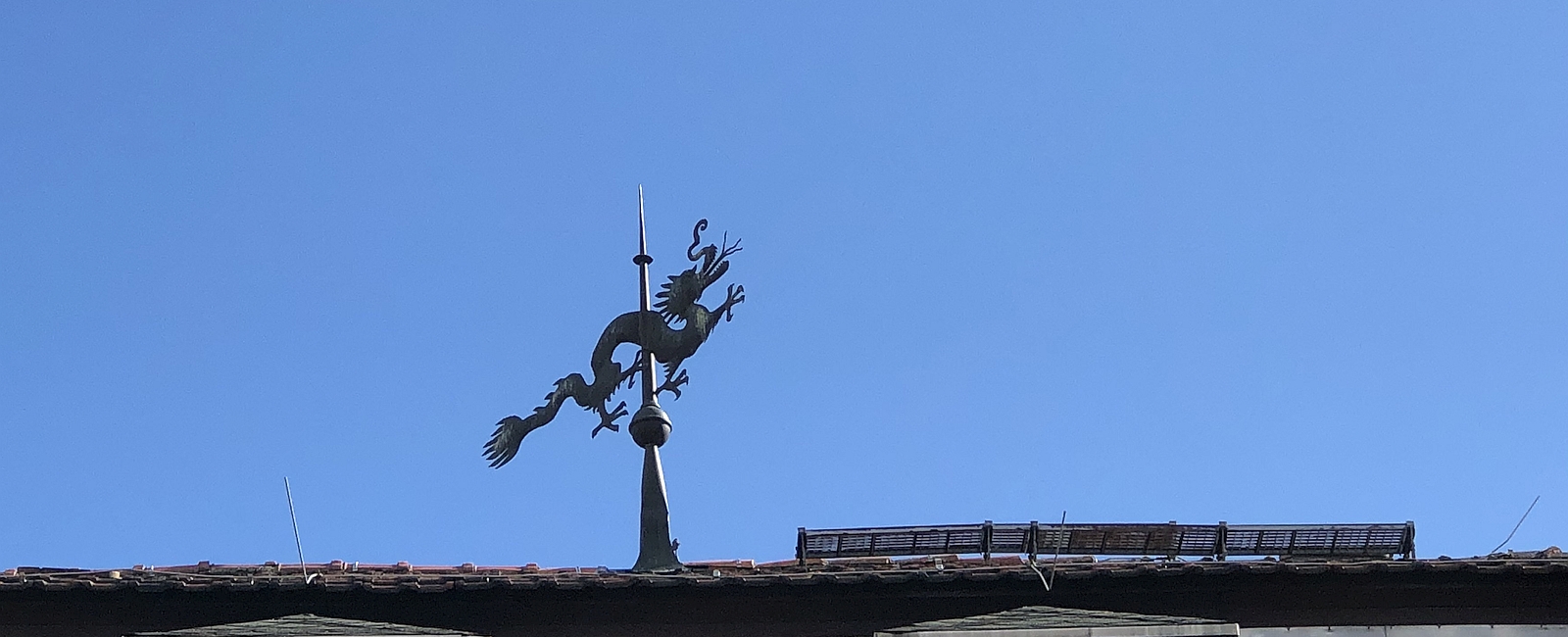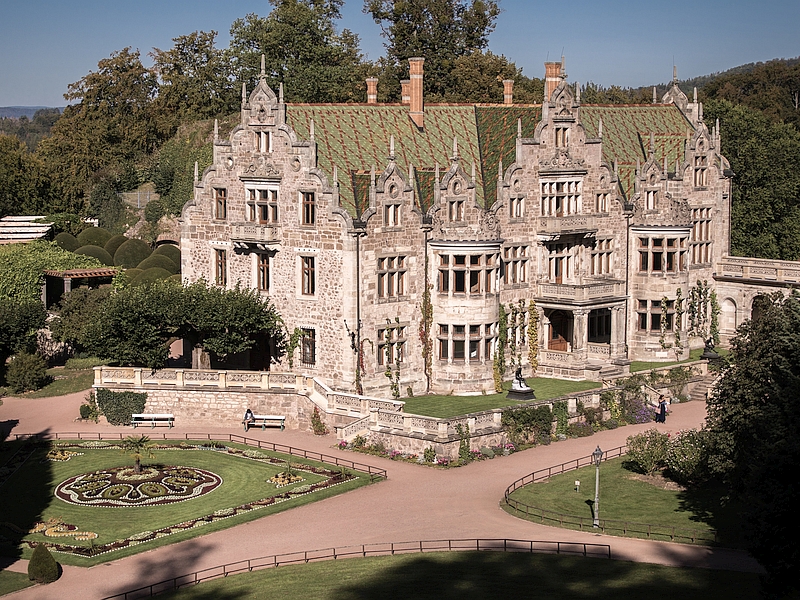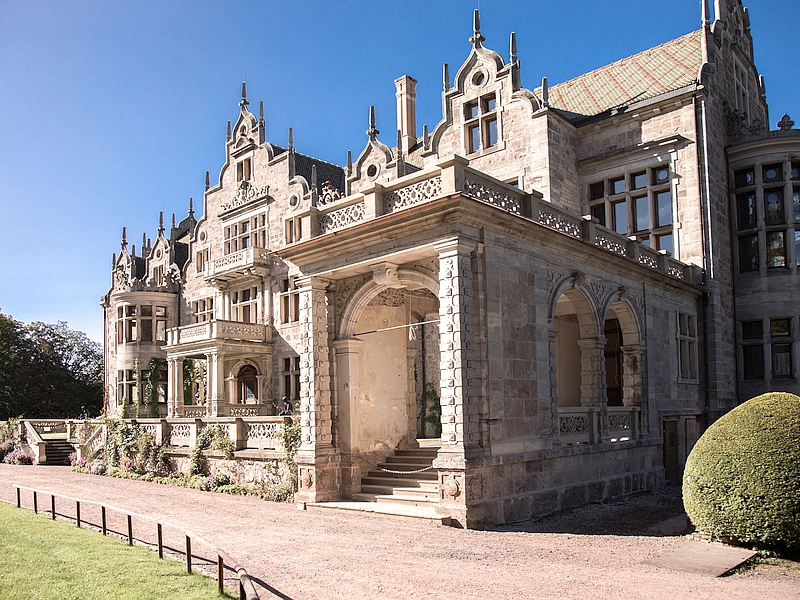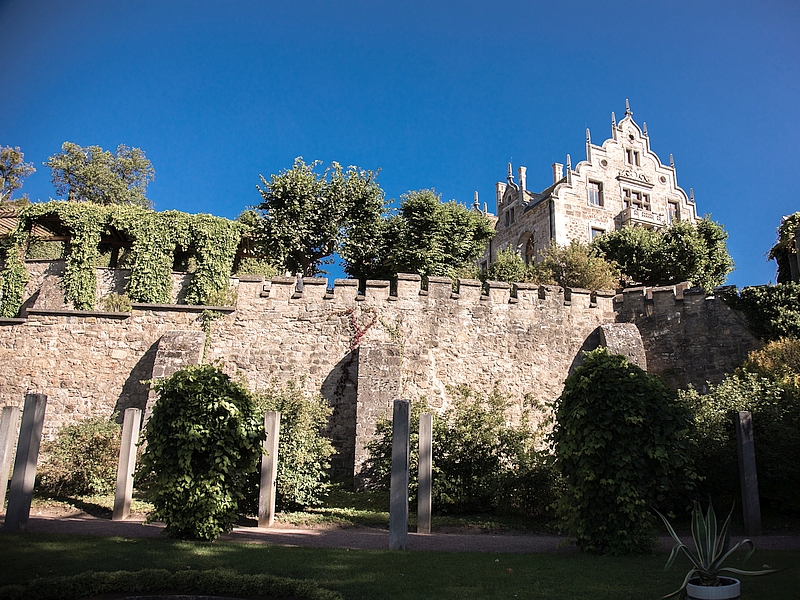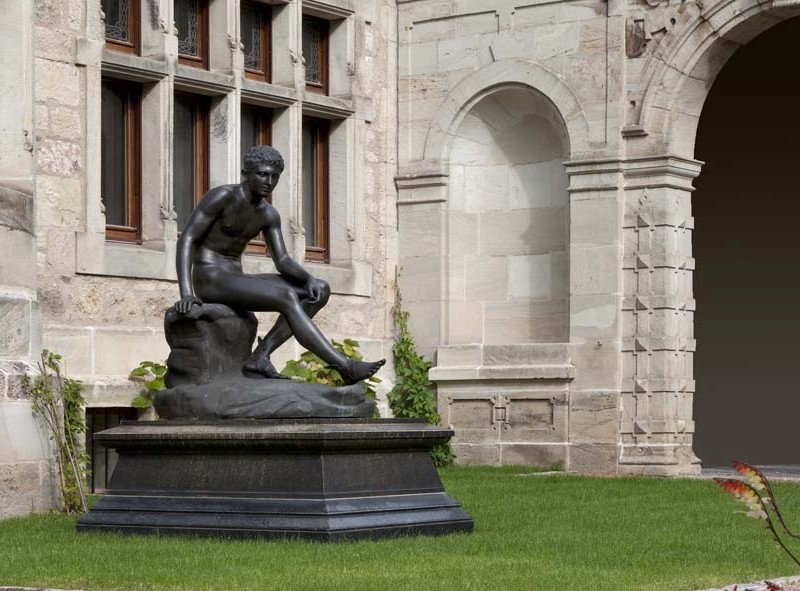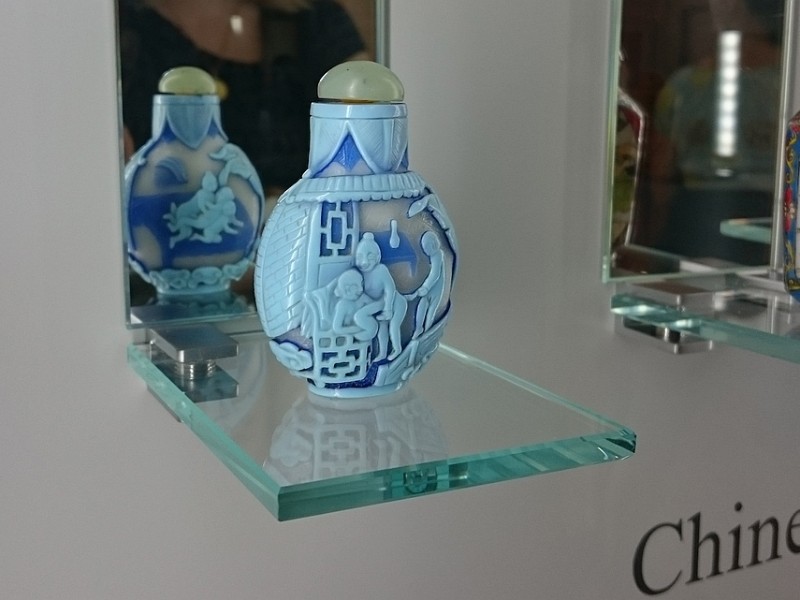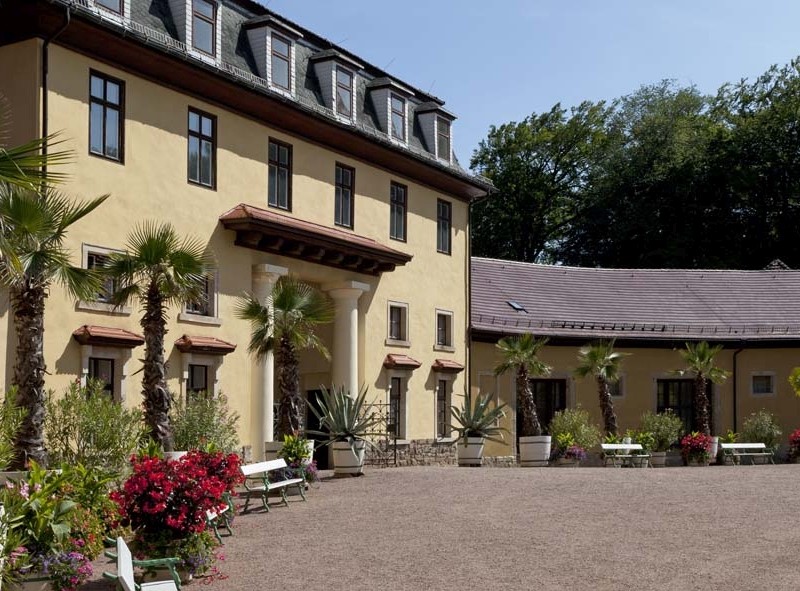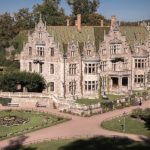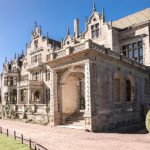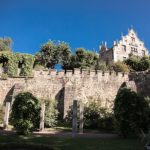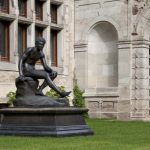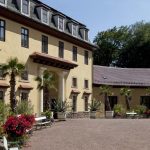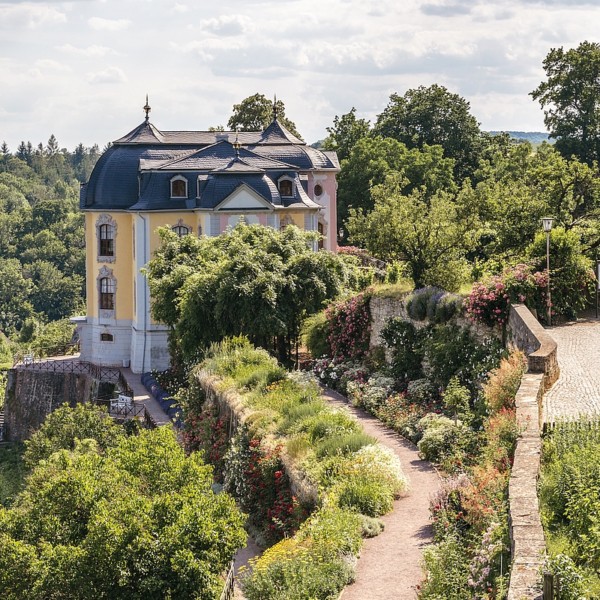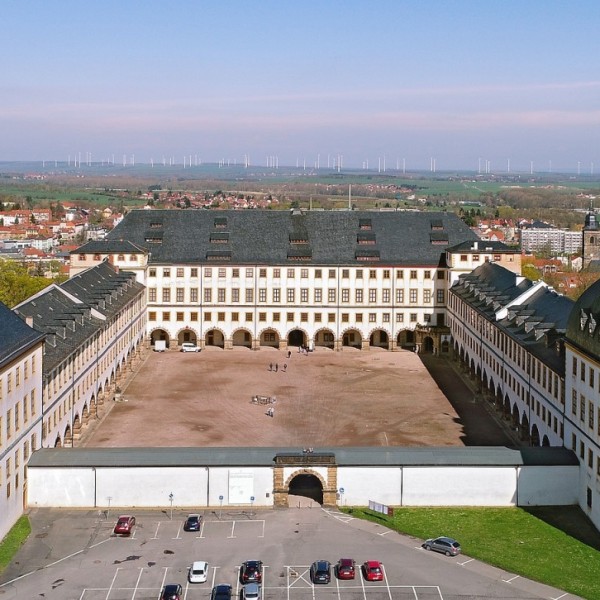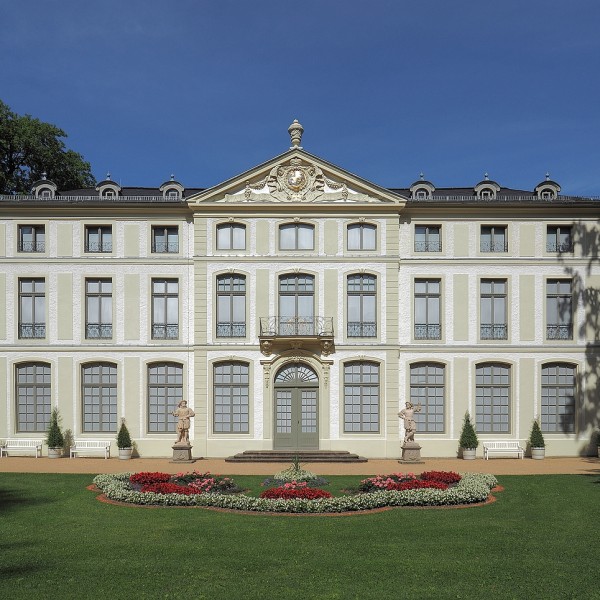Finder
Aufgrund von Baumaßnahmen ist das Schloss bis Ende 2026 leider nicht der Öffentlichkeit zugänglich. Wir bitten um Ihr Verständnis. Der Park ist davon nicht betroffen.
Altenstein House and Park
former summer residence of the Dukes of Sachsen-Meiningen
Wenige Kilometer von Thüringens ältestem Kurort Bad Liebenstein entfernt befindet sich das Schloss Altenstein. Erbaut im Stil der Neorenaissance, diente es einst den Herzögen von Sachsen-Meiningen als Sommerresidenz. Umgeben ist das Schloss von einem malerischen Landschaftspark mit Chinesischem Häuschen, kunstvollen Teppichbeeten und Aussichtspunkten ins Werratal. An der Gestaltung des Parks war kein geringerer als Fürst Hermann von Pückler-Muskau beteiligt. Seit 2017 beherbergt das Schloss eine Gedenkstätte für Johannes Brahms, der mehrmals dort zu Besuch war.
The former summer residence of the Dukes of Sachsen-Meiningen with its equally impressive and spacious park is situated about two kilometres north of the oldest Thuringian watering place, the still prospering spa town of Bad Liebenstein. On their way to this site, which lies in a picturesque location on a mountain plateau, visitors also pass through a wooded area where the Reformer Martin Luther was “assaulted” on his return from Worms and afterwards taken to the Wartburg near Eisenach. The history of the castle, first documented in 1150 and originally called “the stone”, presumably dates back to the 6th century. From the mid-14th century onwards the castle was owned by the Thuringian landgraves, who were later followed by the Ernestiners, the Hund von Wenkheim family and, after the latter had died out in 1722, once again by the Ernestiners. In April 1733 the castle was totally destroyed by fire. The baroque building erected three years later at this site was commissioned by the Duke of Meiningen, Anton Ulrich, and designed by the Italian architect Alessandro Rossini. The official opening of this mansion failed miserably because the architect had not built the main façade towards the south – apparently contrary to what the Duke had expected – but instead towards the rising plateau in the east. The architect took flight and the furious Duke is said never to have set foot in Altenstein House again. However, as of 1798 his son Duke Georg I and his family used mansion and park in the summer. Improvements of the manor house and the erection of a new building for the major-domo at the eastern end of the lawn in front of the house were carried out. This unadorned three-storeyed round building with mansard roof and a gateway framed by Doric columns is followed by the former stables and carriage houses, all arranged on a quadrant-shaped ground plan. New buildings were also erected in the park. Under Bernhard II, the successor of Georg I, architects were asked time and again to make designs for alterations to the mansion; however, none of these designs were ever carried out. When Georg II, highly regarded Europe-wide as the “theatre duke”, assumed his position in 1866, new vitality and willpower moved into Altenstein, especially from 1888 on. The 30-year-old court architect Albert Neumeister was told by his employer: “For the umpteenth time I wish to try my luck in planning an extension and in altering the facade of the mansion.” Designs and corrections were sent back and forth, ideas about the building and how it should be used clashed so that the result was a compromise. While the architect remained in favour of a new building until the end (in fact when looking back upon it 25 years later he actually considered it as such), the duke succeeded with his ideas of extensions and alterations. Behind the strong will of this artistic and tradition-conscious ruler was the very modern realisation that a building should reflect the development of history and that its traces should remain recognisable for the following generations. Making use to a large extent of the baroque cubature, a mansion was built in the English country house style. Two-storeyed semi-circular oriels, curved windows, shaped and angled gables, crowning obelisks and a great number of chimneys are characteristic elements of this style. The origin of this choice of style – Altenstein being the only example of its kind in Thuringia – lies in the fact that the Meiningen dynasty had family ties to England and that Georg II in his capacity as theatre director favoured – apart from Schiller – Shakespeare.
The composer Johannes Brahms, one of the artistic guests of the theatre-duke was also excited. In a letter to the pianist Clara Schumann he enthused about Altenstein: “I wish (and so do the Duke and Duchess) you would sit here at my window and would be able to step outside on to my balcony and then walk in the wonderful park and forest.” A fire in February 1982 which destroyed the entire fitted historic interior has not diminished the attraction of the ensemble of Altenstein House and Park.
In its architectural design the new mansion of Altenstein now equalled its magnificent surroundings, the landscape gardens. In the course of time alterations were made to the latter as well, the most thorough probably being carried out in the summer of 1845, when Prince Hermann von Pückler-Muskau paid a visit to the duke and duchess at Altenstein during his stay in the spa town of Bad Liebenstein. The Prince was enthusiastic about the “wonderful position, luxuriant lawns, gold-green curly hills, the ancient groups of trees, precipitous rocks with terraced gardens” and other things. Nonetheless, he could not help “giving some good advice regarding the park”. Soon afterwards he came again to stake off the grounds. As he did not have the time to stay on the spot, Pückler instructed the court gardener Carl Eduard Petzold from Weimar to supervise the implementation of his plans, which the latter did once a week. Ten years after Pückler’s first stay another renowned landscape designer, Peter Joseph Lenné, Director General of the Royal Gardens in Prussia, visited Altenstein and made suggestions for alterations to individual paths.
Unterhalb der Parkanlage befindet sich die 1799 bei Straßenbauarbeiten entdeckte Altensteiner Höhle. Hier ließ Herzog Georg I. 1800 einen unterirdischen Landschaftspark einrichten. Dieser Park ist seit Dezember 2023 im Rahmen von Führungen wieder für die Öffentlichkeit zugänglich.
Ausstattungsmerkmale






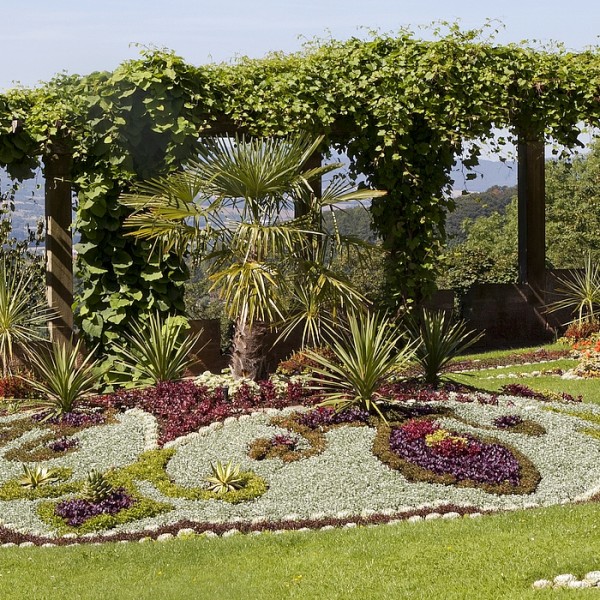
April - Oktober
Besucherzentrum Altenstein
saisonal, April - Oktober
Öffnungszeiten:
Dienstag - Freitag: 11:00 - 15:00 Uhr
Samstag, Sonntag, Feiertage: 11:00 - 16:00 Uhr
Montag: geschlossen
parks and gardens
Landschaftspark ist ganzjährig frei zugänglich
Weitere Einrichtungen
weitere Angebote finden Sie hier
April - Oktober Besucherzentrum Altenstein
36448 Bad Liebenstein
Schlossverwaltung Schloss Altenstein
36448 Bad Liebenstein
Parkverwaltung Schlosspark Altenstein
36448 Bad Liebenstein
Fördervereine
Förderverein Altenstein-Glücksbrunn e.V.
Altenstein 4 | Hofmarschallamt
36448 Bad Liebenstein
Tel: 03 69 61 – 73 41 18
info@foerderverein-altenstein.de
öffentliche Führungen durch den Park finden Sie im Veranstaltungskalender Führungen für Gruppen auf Anfrage möglich, Angebote finden Sie auch unter www.bad-liebenstein.de oder T.: 03696169320
Besucherzentrum Altenstein April bis Oktober Infos unter www.bad-liebenstein.de oder T.: 036961700567 zur Buchung von Führungen hier klicken
Pkw: am Waldhaus ca. 250 m bis zum Hofmarschallamt (70 Plätze), Behinderten-Parkplatz: am Hofmarschallamt (7 Pkw mit Ausweis). Busvorfahrt: am Hofmarschallamt, Busparkplatz: an der Altensteiner Höhle
Café Altenstein Restaurant | Café | Event Altenstein 6 | 36448 Bad Liebenstein Café: 80 Plätze Außenbereich: 140 Plätze Reservierung für Gruppen möglich. Öffnungszeiten: Do 17 – 22 Uhr, Fr 18 – 22 Uhr, Sa, So und Feiertag 11 – 19 Uhr und nach Vereinbarung, T: +49 (0) 36961/707733 (während der Öffnungszeiten) 0174/21 70 859

